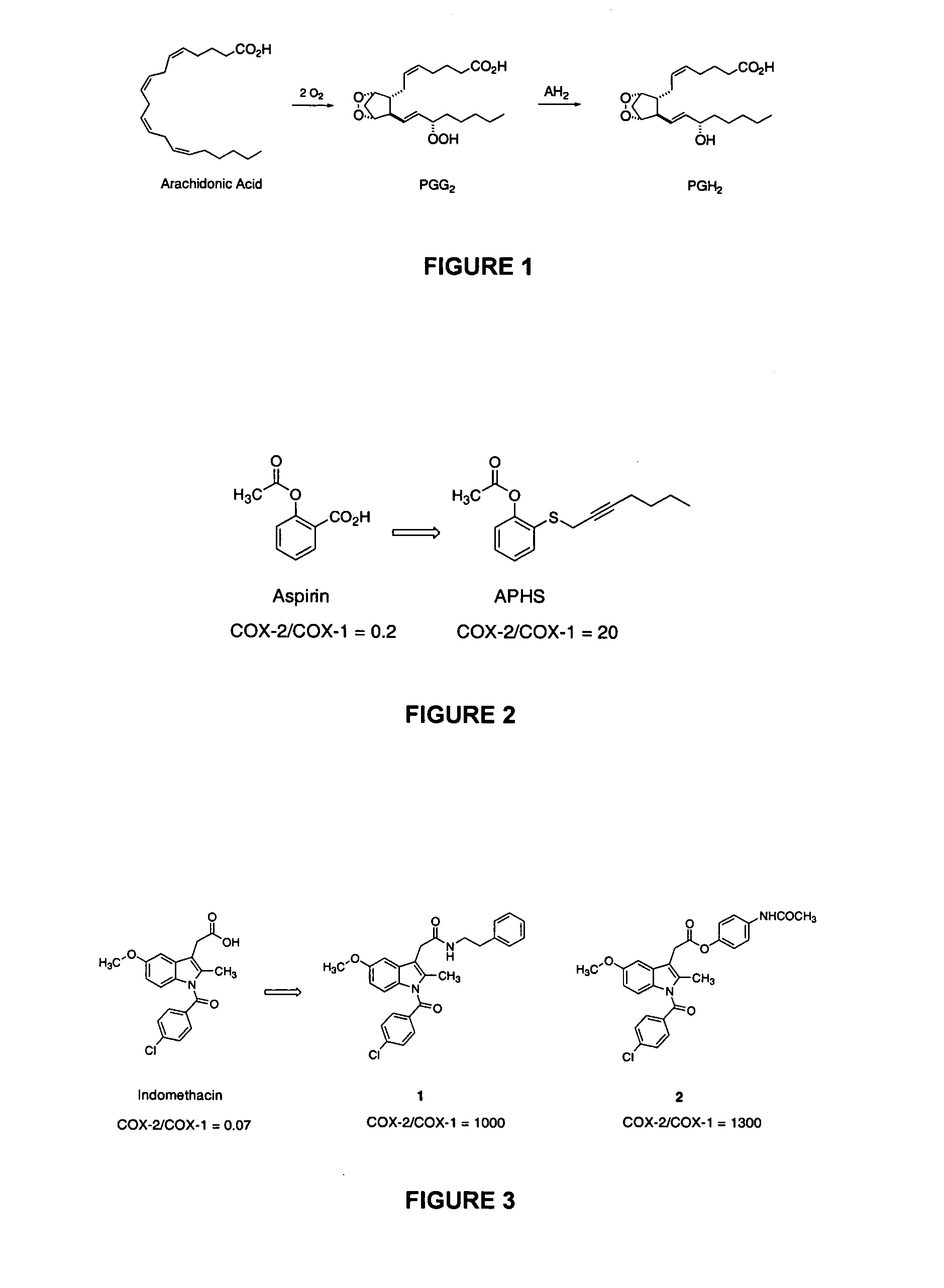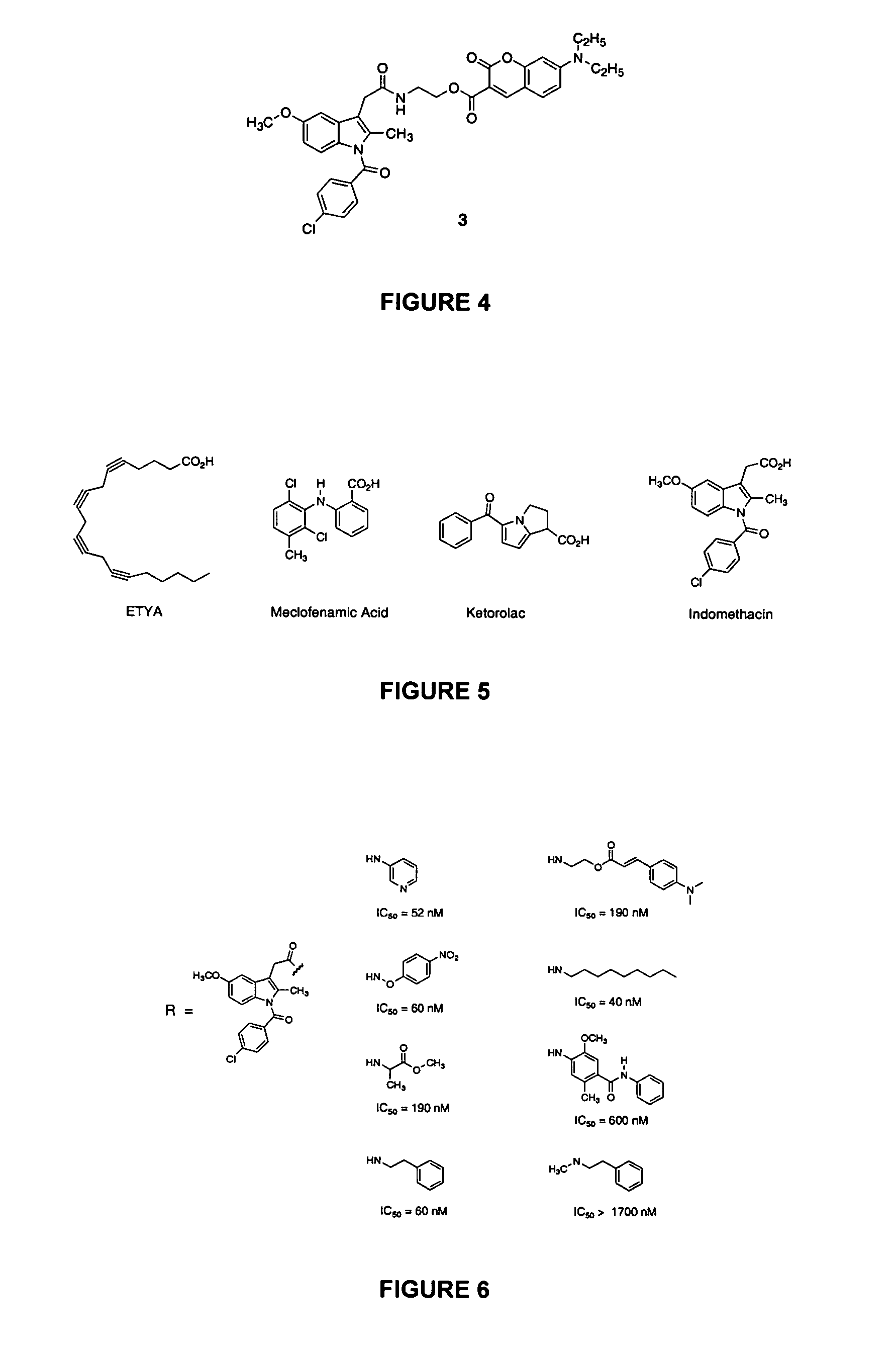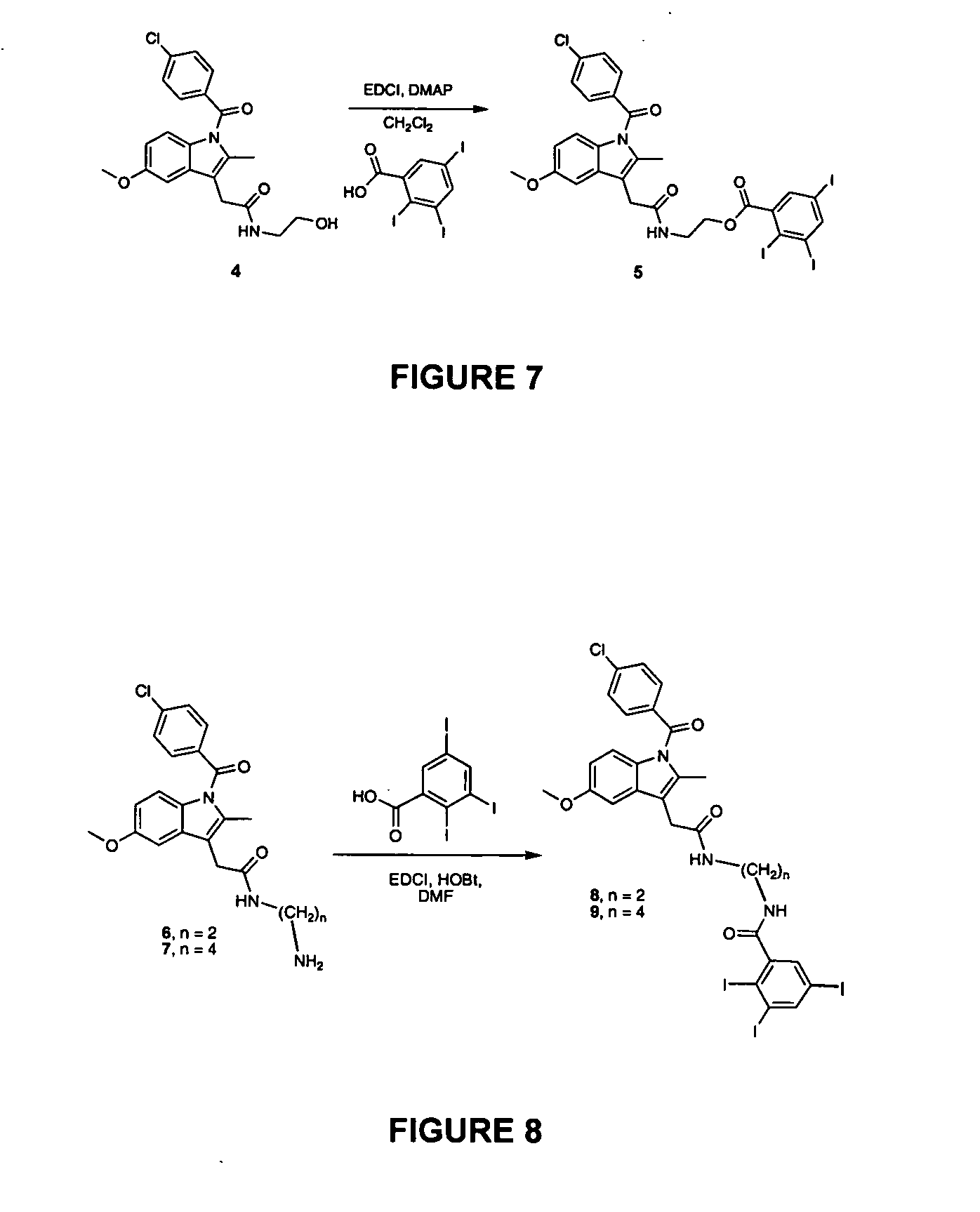COX-2-targeted imaging agents
a technology of imaging agents and cox-2, which is applied in the field of imaging agents, can solve the problems of not being able to specifically deliver imaging agents, unable to achieve tumor-specific imaging, and lack of targeting ligands
- Summary
- Abstract
- Description
- Claims
- Application Information
AI Technical Summary
Benefits of technology
Problems solved by technology
Method used
Image
Examples
example 1
Synthesis of Aspirin-Derived COX-2-Selective Ligands
Aspirin is a representative NSAID that has significant analgesic properties. It is the only NSAID that covalently modifies cyclooxygenases. Aspirin acetylates a serine residue (Ser530 of COX-1 and Ser516 of COX-2), which appears to block the active site of the enzyme for its substrates (Van der Ouderaa et al., 1980; DeWitt et al., 1990), thereby inactivating the enzyme. While aspirin acetylates both COX-1 and COX-2, it is about 10-100 times as potent against COX-1 as it is against COX-2 (Meade et al., 1993; Vane and Botting, 1996).
Various derivatives of aspirin were investigated for their abilities to inhibit COX-1 and COX-2 in an effort to identify derivatives that displayed enhanced COX-2 inhibition relative to COX-1 inhibition. A series of acetoxybenzenes were derivatized in the ortho position with alkylsulfides. o-(Acetoxyphenyl)methyl sulfide exhibited moderate inhibitory potency and selectivity for COX-2 (Kalgutkar et al....
example 2
Fluoro Analogs of APHS
The ability of APHS to selectively acetylate COX-2 provides multiple opportunities for the design of a PET imaging agent. From a technical standpoint, the most easily accomplished is to synthesize an isotopically labeled haloalkyl derivative of APHS. This requires that such derivatives must be effective inhibitors of COX-2. To explore this possibility, a fluoroacetyl derivative of APHS (F-APHS) was synthesized and shown to be an effective inhibitor of COX-2 (IC50=4 μM). F-APHS inhibits the COX-2 activity in RAW 264.7 macrophages with an IC50 of 2.8 μM. However, it did not inhibit the COX-1 activity in uninduced macrophages at concentrations up to 32 μM.
example 3
Radioactive Analogs of APHS
The fluorine atom of F-APHS can also be a radioactive isotope, such as 18F. A direct synthesis route is a single-step exchange of 18F− for halogen, mesylate, or tosylate leaving groups. Previous reports indicate that 18F− exchanges with Br− or I− in bromo- or iodo-acetyl esters or with mesyl or tosyl in mesyl- or tosyl-acetyl esters to form the corresponding 18F− fluoroacetyl esters without hydrolysis (FIG. 12; Block et al., 1988). The iodo-derivative of APHS has been synthesized, and can be used for the exchange reaction.
Alternatively, an 18F exchange with the tosyl-derivative of APHS can be used. The latter is available through tosylation of the glycolate ester of APHS. Tosylates are readily exchanged by F−, so this method is a facile alternative in the event that exchange with iodo-APHS is undesirable (Block et al., 1988).
One potential complication of the exchange reaction is hydrolysis of the acetyl-phenolate during 18F exchange. Although this is...
PUM
| Property | Measurement | Unit |
|---|---|---|
| carboxylic acid | aaaaa | aaaaa |
| fluorescent | aaaaa | aaaaa |
| PET | aaaaa | aaaaa |
Abstract
Description
Claims
Application Information
 Login to View More
Login to View More - R&D
- Intellectual Property
- Life Sciences
- Materials
- Tech Scout
- Unparalleled Data Quality
- Higher Quality Content
- 60% Fewer Hallucinations
Browse by: Latest US Patents, China's latest patents, Technical Efficacy Thesaurus, Application Domain, Technology Topic, Popular Technical Reports.
© 2025 PatSnap. All rights reserved.Legal|Privacy policy|Modern Slavery Act Transparency Statement|Sitemap|About US| Contact US: help@patsnap.com



